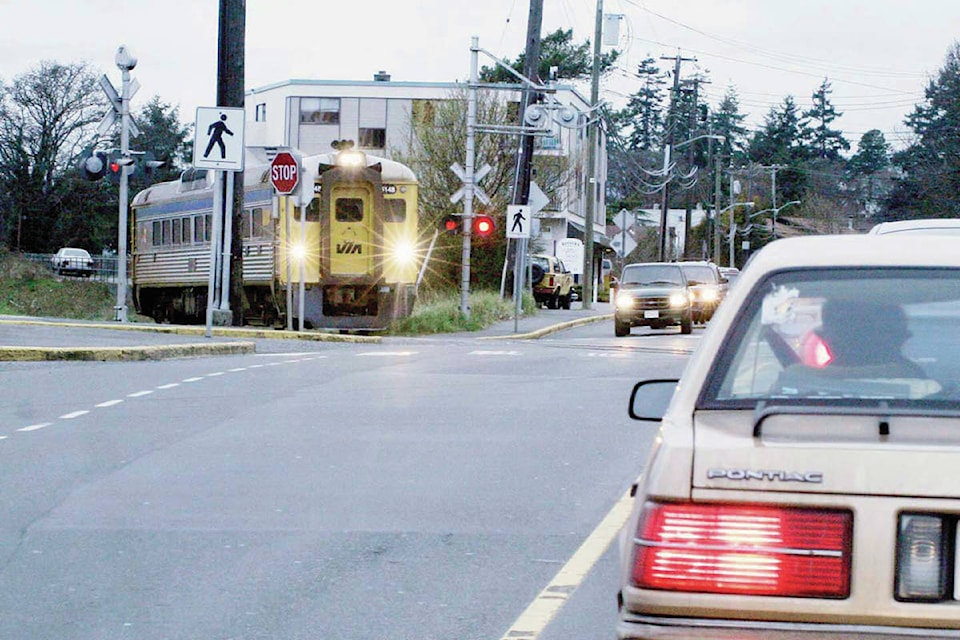Don Descoteau
VICTORIA NEWS
A very disappointed Esquimalt Mayor Barb Desjardins is wondering how a study on how to best turn the E&N corridor from Langford to Victoria into a commuter route managed to get derailed.
B.C. NDP Minister of Transportation Clair Trevena recently indicated the previous Liberal government’s review of options for the corridor, which last saw passenger train traffic six years ago, did not provide for enough consultation with local First Nations, among other things, and was therefore being scrapped.
Desjardins was chair of the Capital Regional District board last spring when then-minister Todd Stone gathered with other area mayors in Esquimalt to announce a new study and the formation of a working group.
The announcement came on the heels of discussions that included Bayview Place developer Ken Mariash, railbed owner Island Corridor Foundation, BC Transit and First Nations, Desjardins said.
READ: Province establishes working group to study commuter rail options
While the issue of the lack of regional governance for transportation doesn’t make things any easier for the municipalities, who could otherwise put forth a unified front to deal with upper levels of government on funding and support for projects like this, the work already done should make this project easier, she said.
”The hardest thing in transportation is finding the corridor and here we have one sitting there,” she said. “Making something happen on it shouldn’t be this hard or this slow.”
An emailed Ministry of Transportation statement said MOT did not move forward with the E&N feasibility study due to the extended post-election transition period, and because “the ministry was neither able to consult with First Nations nor award the contract within the announced timeframe.”
When the new NDP government reviewed the situation, the statement continued, it was determined that the study “could not proceed at that point without proper consultation with the Esquimalt and Songhees First Nations.”
In the meantime, rookie Esquimalt-Metchosin MLA Mitzi Dean has been tasked with leading new discussions with First Nations and municipal partners about how to best transform the rail line into a functional transportation corridor.
Asked what the next steps are, Desjardins said the mayors likely need to band together to try and convince the three NDP MLAs along the route – Finance Minister Carole James and Premier John Horgan are the others – of the urgency of the situation.
“That corridor that can unlock that gridlock,” Desjardins said, adding that a solution needs to be found in a reasonable timeline before the research already done becomes obsolete.
Meanwhile, the ICF is still waiting for some indication from the government on whether it support the basic elements of a proposed new $42.7 million in track upgrades.
That plan calls for 120,000 ties to be replaced; 70,000 tonnes of ballast; bridge upgrades; siding rehabilitation; safety sight and sound barriers through several First Nation communities; crossing safety improvements and a trail walkway across the Chemainus River bridge.
In an email to The NEWS, the ministry’s communications director, Ryan Jabs, said Trevena was pleased to meet with the ICF in what was largely an introductory meeting. But he provided no indication whether the B.C. government will endorse the plan.
Jabs said the provincial government understands the importance of the E&N rail corridor to residents of Vancouver Island and will continue to meet with various parties about possibilities for the line.
